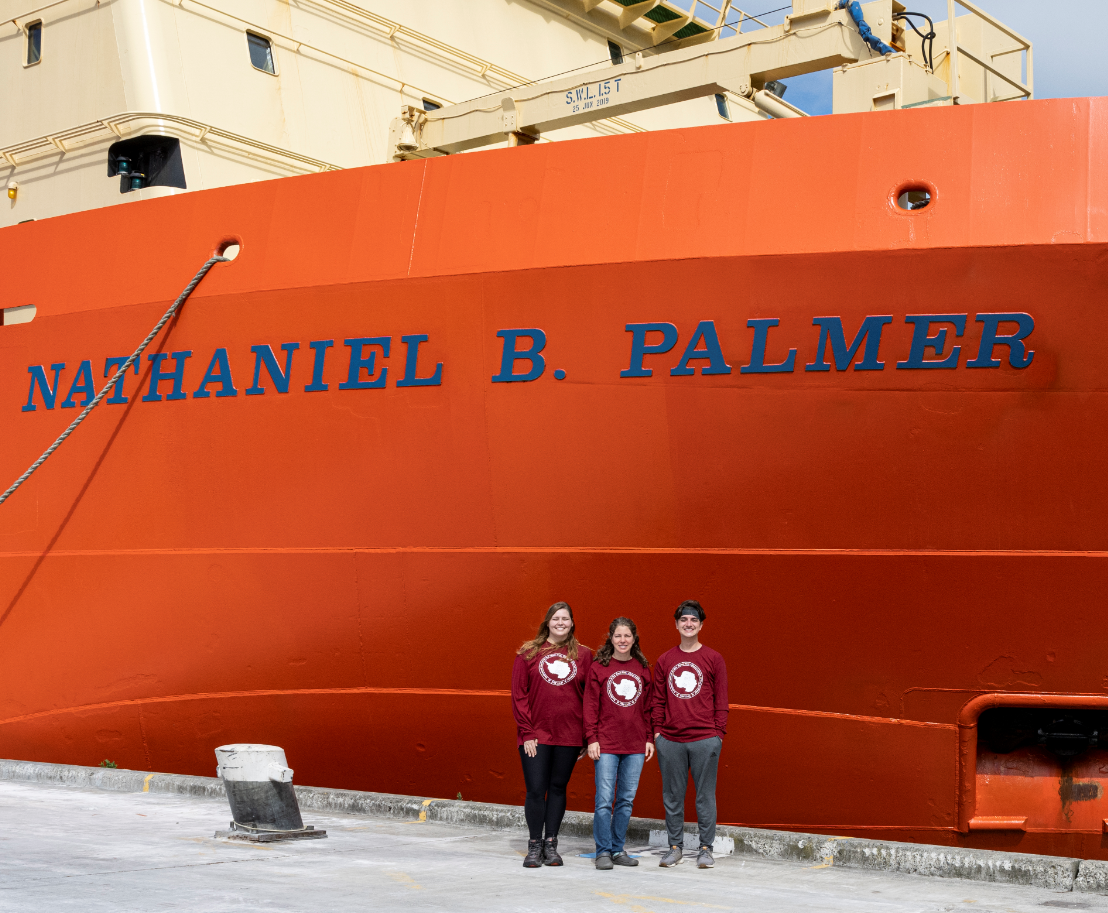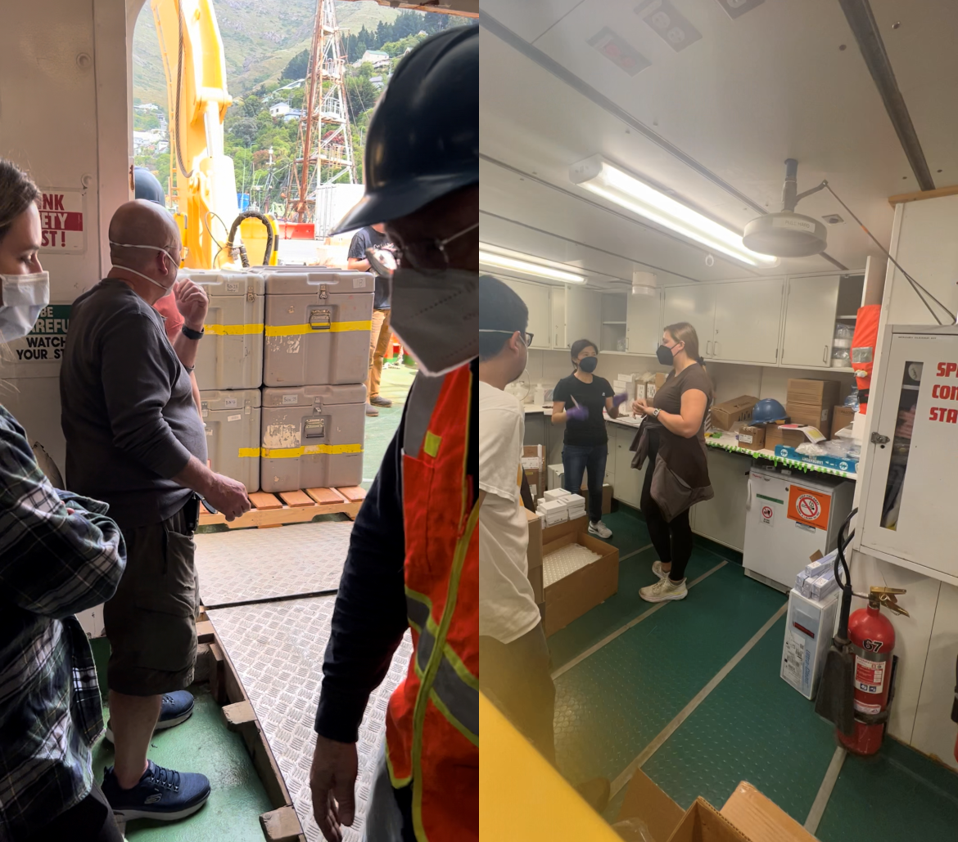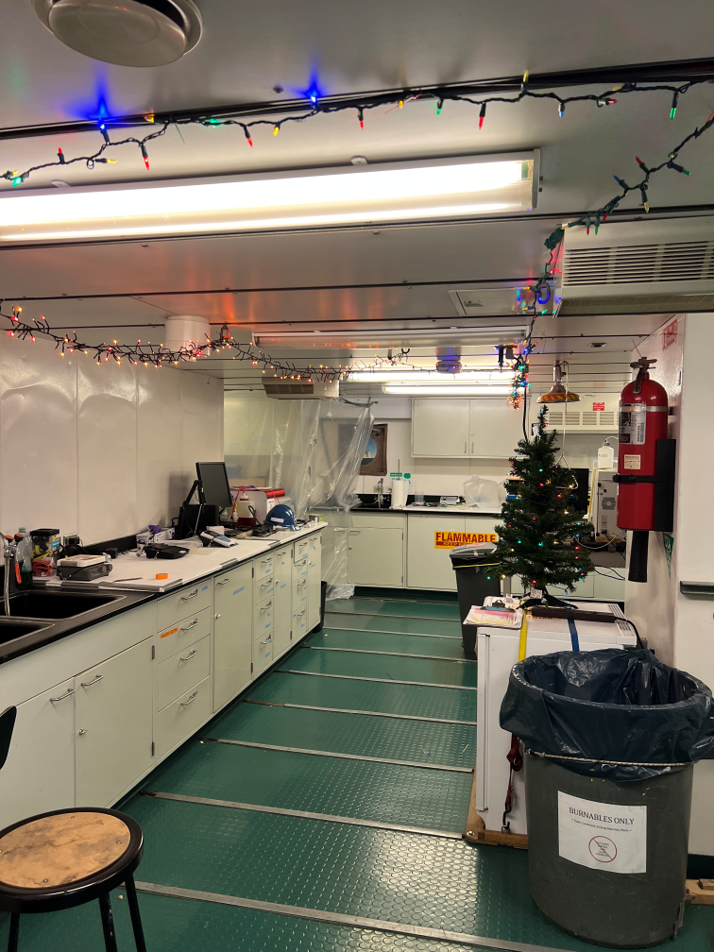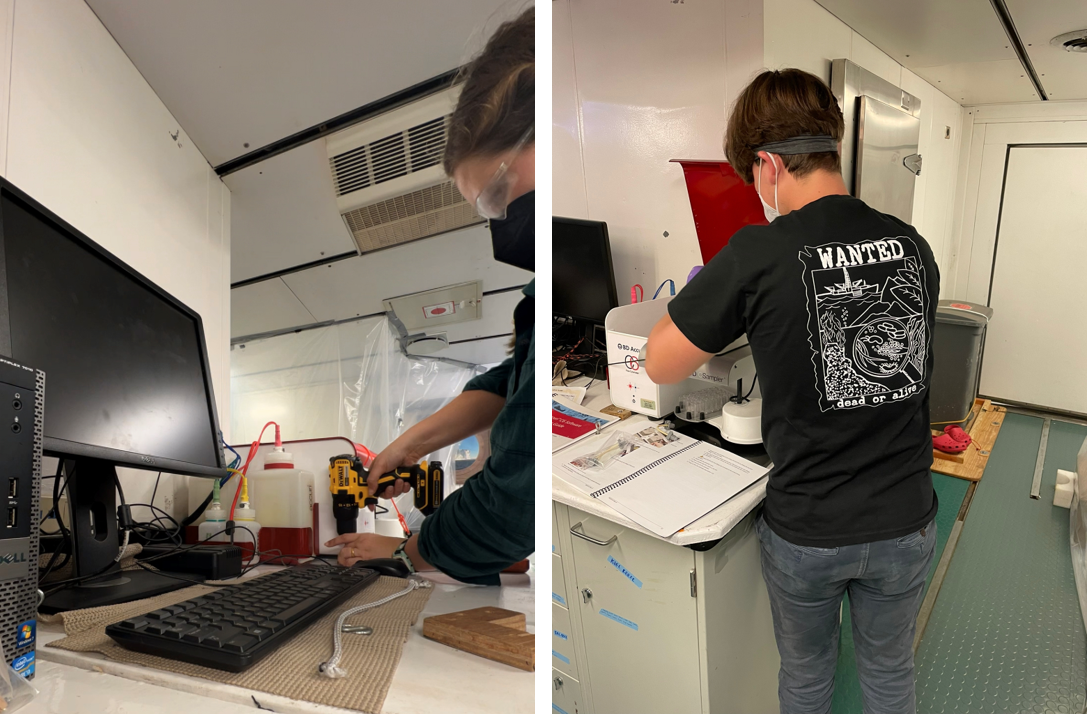
The Kiel Reese Geomicrobiology Group in front of the R/V Nathaniel B. Palmer (Rachel Weisend, Dr. Brandi Kiel Reese, Caleb Boyd).
Hello from the South Pacific Ocean,
It has been quite the whirlwind getting adjusted to life here on the icebreaker R/V Palmer and preparing to conduct our research.
To set up a lab space in close quarters, we have to think strategically about the following:
- What resources are we sharing?
- How do we keep our samples sterile – Are there air vents blowing onto the bench? Are people walking by frequently?
- Where will we store our supplies?

a) watching packing containers be brought up by crane prior and b) sorting through them.
And on top of those questions, we have to consider the nature of being on a ship in the open ocean. Everything must be bolted down and stored while we are underway. Anything that can move, will.
We began by sorting out supplies that were shipped to the vessel and started to arrange them in our lab space keeping our workflow in mind. Before setting sail, we had to set up our instruments and make sure they were bolted down.

A very festive bio lab on the icebreaker R/V Palmer.
One of our priorities for this expedition is to subsection sediment samples with as little contamination as possible. As microbial ecologists, we work very hard to make sure any microbes from ourselves or the ship do not join the natural microbial community of our samples.
To keep our bench area clean, we hung up plastic sheets to block out any outside contaminants. And to add a festive flair, we added string lights to the lab space.
While setting up the lab, we have also been getting accustomed to living on a ship. Some adjustments include: setting meal times, sleeping on a bunk bed, reduced internet access, constant motion, and limited space

a) Rachel Weisend bolting down a cell sorter, b) Caleb Boyd setting up the instrument and running a quality check to ensure it is working properly.
We have been enjoying getting to know the other scientists and learning about the research they will be doing and will be interviewing them in the weeks to come!
More updates to come!
Written by Rachel Weisend
(-046 11.555 S, 173 59.364 E)